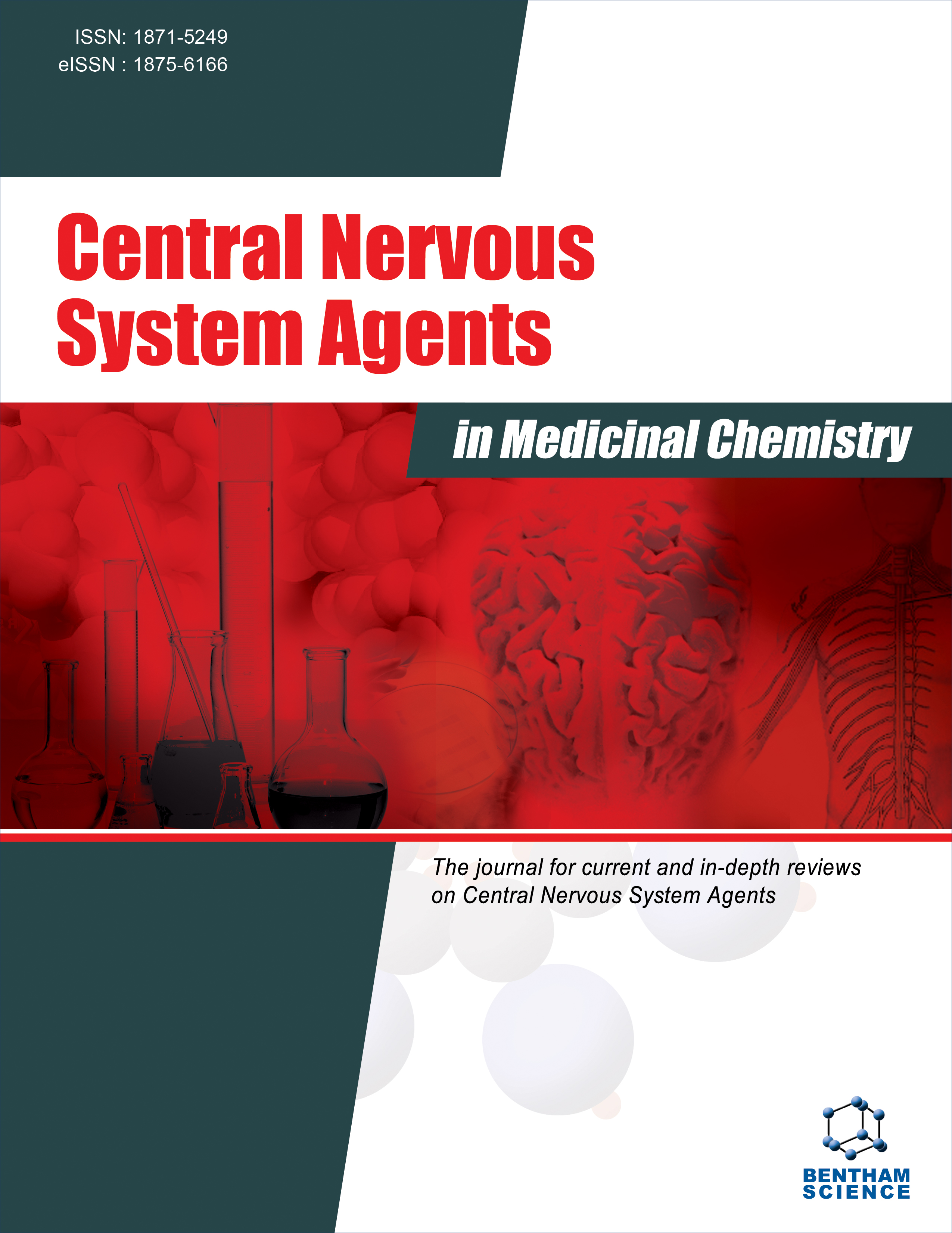- Home
- A-Z Publications
- Central Nervous System Agents in Medicinal Chemistry (Formerly Current Medicinal Chemistry - Central Nervous System Agents)
- Previous Issues
- Volume 7, Issue 3, 2007
Central Nervous System Agents in Medicinal Chemistry (Formerly Current Medicinal Chemistry - Central Nervous System Agents) - Volume 7, Issue 3, 2007
Volume 7, Issue 3, 2007
-
-
Partial Dopamine Receptor Agonists as Newer Atypical Antipsychotics:Intrinsic Activity Appropriate for Treatment of Schizophrenic Patients
More LessBy Yuji OdagakiConventional antipsychotic drugs, which have been used for a half century to treat a range of major psychiatric disorders like schizophrenia, are being replaced by modern “atypical antipsychotics”. Although the term “atypical” has been applied broadly to antipsychotic drugs marketed in the past decade, these newer drugs are strikingly heterogeneous in chemical, pharmacological, and clinical points of view. Recently, much a Read More
-
-
-
Antifungal Therapy Used in Central Nervous System Fungal Infections
More LessAuthors: Zhirong Yao, Wanqing Liao and Jianying LiangAmphotericin B remains an important choice for central nervous system (CNS) fungal infections, although its adverse effects have limited its use, especially nephratoxicity. New formulations of amphotericin B, new azoles and echinocandins have been developed for clinical use in the past decade. However, high mortality is associated with CNS fungal infections, especially those due to filamentous fungi. Mortality risk of cere Read More
-
-
-
Diagnostic and Pathophysiological Impact of FP-CIT SPECT in Parkinson 's Disease
More LessBy Jorg SpiegelIdiopathic Parkinson's disease (PD) is characterized by a Lewy body-degeneration of presynaptic nigrostriatal dopaminergic neurons. This degeneration can be visualized by nuclear medicine methods, primarily by FP-CIT SPECT: Fluoropropyl-Carbomethoxy-Iodophenyl-Tropan (FP-CIT), marked by radioactive 123iodine, binds to dopamine reuptake transporters at the presynaptic membrane of the nigral dopaminergic ne Read More
-
-
-
Glycine Transporter-1 Inhibitors as Novel Therapeutic Drugs for Schizophrenia
More LessMultiple lines of evidence suggest that hypofunction of glutamatergic neurotransmission via N-methyl-Daspartate (NMDA) receptors might be implicated in the pathophysiology of schizophrenia. The NMDA receptor hypofunction hypothesis of schizophrenia suggests that increasing NMDA receptor function via pharmacological manipulation could provide a potential new strategy for the management of schizophrenia. Curre Read More
-
-
-
Unique Insights into the Actions of CNS Agents: Lessons from Studies of Chlorpyrifos and Other Common Pesticides
More LessAuthors: Rory E. Mauro and Li ZhangThe development of CNS drugs has been the most challenging task in drug design. Only an abysmal one percent of nervous system drugs tested in human clinical trials ever reach market. This is largely attributable to the difficulties in both identifying appropriate targets and in understanding the toxicology, pharmacology, and pharmaceutical properties of therapeutic compounds. Pesticides have not attracted much attention in th Read More
-
-
-
Synthesis and Evaluation of Schiff Bases for Anticonvulsant and Behavioral Depressant Properties
More LessAuthors: Jainendra S. Jain, Radheshyam S. Srivastava, Navneet Aggarwal and Reema SinhaA series of Schiff bases of menthone has been synthesized using an appropriate synthetic route and characterized using Thin Layer Chromatography and spectral analysis. The synthesized compounds were evaluated for anticonvulsant activity against maximal electro shock (MES) and strychnine induced seizures model in rats. The neurotoxicity and behavioral depressant studies were also carried out using rotorod Read More
-
-
-
Mitochondria as Targets for Neuronal Protection Against Excitotoxicity: A Role for Phenolic Compounds?
More LessAuthors: Bruno A. Silva, Paulo J. Oliveira, Alberto C.P. Dias and Joao O. MalvaMitochondria are key players in the energetic metabolism, providing energy for almost every cellular process, playing also a central role in the maintenance of normal cellular function. The brain has a high energy demand; hence neurons are especially susceptible to disturbances in oxygen and nutrient availability. Such disturbances, as observed in pathologies such as ischemia/reperfusion or stroke, can represent an insult w Read More
-
Volumes & issues
-
Volume 25 (2025)
-
Volume 24 (2024)
-
Volume 23 (2023)
-
Volume 22 (2022)
-
Volume 21 (2021)
-
Volume 20 (2020)
-
Volume 19 (2019)
-
Volume 18 (2018)
-
Volume 17 (2017)
-
Volume 16 (2016)
-
Volume 15 (2015)
-
Volume 14 (2014)
-
Volume 13 (2013)
-
Volume 12 (2012)
-
Volume 11 (2011)
-
Volume 10 (2010)
-
Volume 9 (2009)
-
Volume 8 (2008)
-
Volume 7 (2007)
-
Volume 6 (2006)
Most Read This Month
Article
content/journals/cnsamc
Journal
10
5
false
en


